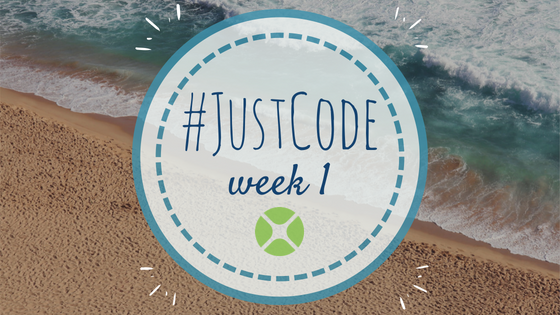It’s the first week of the Just Code challenge so I’m starting with something pretty simple. This app lets you choose a color using the system color picker and then shows you the color values in hexadecimal (useful for programming, HTML and CSS), RGB (red, green, blue), HSV (hue, saturation,value) and CMY (cyan, magenta, yellow).
Comments closedAuthor: Paul Lefebvre
I’m often asked by kids and adults how they can start coding and learn to make apps? You could start with the usual books or videos.
But maybe you want to jump right in. When I started programming that is exactly how I learned. I tried things to see what worked and what didn’t work. I also looked at and modified other programs I found.
You can learn to code if you just code.
Comments closedThese days everyone has a great idea for an app. Maybe you have an idea that would save you time at work, or maybe you’ve been thinking of an app that would automate something you do at home. Not sure where to start? One of your first steps is choosing a development tool that is right for you and for your project.
Here are five questions to guide your decision:
Comments closedYou can call into Win32 APIs (aka WinAPI) to use methods and properties that are not built into the framework by using the Declare command. To create a Declare statement you first need to track down the API you want to use using Microsoft’s documentation: Microsoft Developer Documentation.
Comments closedYou can call into Cocoa APIs to use methods and properties that are not built into the Xojo framework by using the Declare command. To create a Declare statement you first need to track down the API you want to use using Apple’s documentation: Apple Developer Documentation.
Comments closedThe Cloud is everywhere these days. And lots of companies offer Cloud products or services. Why should you use them?
Comments closedStarting with Xojo 2018r1, your Xojo apps require the libunwind8 library to be installed on your Raspberry Pi. Here’s how to update your Pi.
Comments closedXojo 2018 Release 1 has a new feature for Xojo Cloud users: Xojo Cloud Server Stats.
Comments closedHere are some tips that will help ensure your Windows apps look and feel their best, with Xojo 2018 Release 1 now that Windows apps now have a more stable and flicker-free UI than ever before.
1 CommentYou can call into Linux APIs to use methods and properties that are not built into the framework by using the Declare command. To create a Declare statement you first need to track down the API you want to use using Linux documentation.
Comments closed


